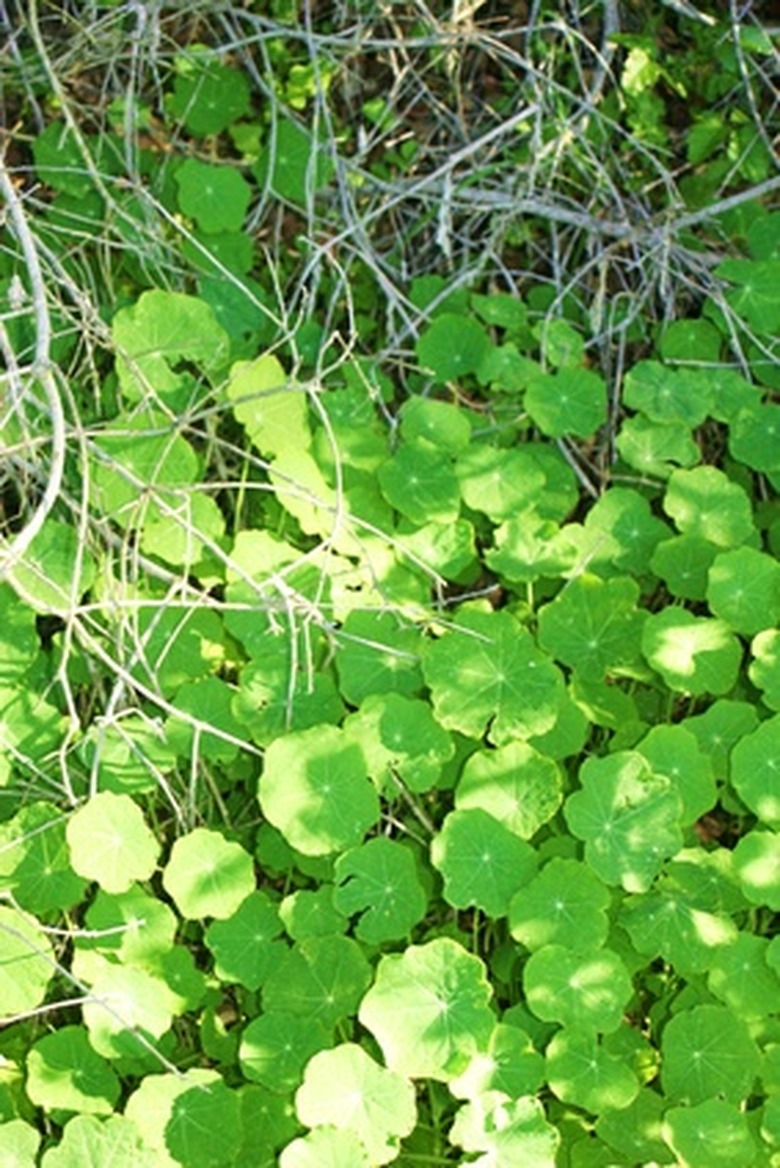Ivy As A Ground Cover
Ivy makes a beautiful evergreen ground cover, especially when planted under trees where other plants find it challenging to grow. Besides working as a ground cover, ivy also makes a vigorous climbing plant, clinging to decorative arches, trellises and fences as it grows upward. The plant also helps contain and prevent soil erosion. Some gardeners use ivy to link different types of ornamental plants and trees to improve their garden design. Other types of ivy easily mold into shapes, adding yet another design dimension to the garden.
Description
A fast-growing evergreen ground cover, ivy comes in many types. Most ivy features green leaves, some with light-colored veins, which spread through nodes that appear on the plant's long vines. These nodes root, then continue to spread over the ground. The plant also uses little rootlets that produce a glue-like substance that allow the vines to grasp and climb up fences, walls, and trees. A few types of ivy produce flowers. Once ivy matures, it begins to form berries. The berries get distributed into new areas by birds.
- Ivy makes a beautiful evergreen ground cover, especially when planted under trees where other plants find it challenging to grow.
- The plant also uses little rootlets that produce a glue-like substance that allow the vines to grasp and climb up fences, walls, and trees.
Varieties
More than 400 cultivars of ivy exist in the world. One of the better known ivies, English ivy (Hedera helix), features small leaves that create a fine-textured ground cover. Algerian ivy (Hedera canariensis), also known as canary ivy, sports larger leaves and includes variegated forms such as Gloire de Marngo. Another type of ivy includes ground ivy (Glechoma hederacea), a member of the mint family that grows very fast and features bluish-purple flowers. Some plants such as Boston ivy (Parthenocissus tricuspidata) are not really ivies at all, but the plant works well as both a ground cover and a clinging vine with its leaves turning shades of red in the fall before they fall off.
Planting
Many types of ivy thrive in shady areas of the garden and easily adapt to almost any soil type. The plant requires little water, making it ideal for planting under trees with large canopies where little water drips through to the ground. Since ivy takes little time to spread, gardeners only need to plant a few, then let the plant start spreading on its own. The plants do not require fertilizer, but regular watering helps them get established more quickly. Most ivy grows in hardiness zones five to 10.
- More than 400 cultivars of ivy exist in the world.
- Some plants such as Boston ivy (Parthenocissus tricuspidata) are not really ivies at all, but the plant works well as both a ground cover and a clinging vine with its leaves turning shades of red in the fall before they fall off.
Maintenance
Ivy requires cutting back to keep the plant within its boundaries. Otherwise, the plant climbs and spreads over any object in its way. If the ivy starts to climb a tree, cut the plant back and remove all of the vines and roots hanging on the tree. As the ivy matures and forms berries, the plants may show up in other areas of the garden. Remove any unwanted plants as quickly as possible to stop them from spreading or taking over areas of the garden.
Warnings
In some areas, ivy crowds out native wildflowers and other plants that provide valuable food sources for birds and wildlife. When ivy clings to walls and fences, the roots work into the structures, causing damage. Ivy growing on trees makes the tree more susceptible to getting blown over in the wind. The tree's bark may also experience rot and disease if covered by ivy.
- Ivy requires cutting back to keep the plant within its boundaries.
- As the ivy matures and forms berries, the plants may show up in other areas of the garden.
